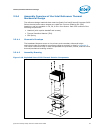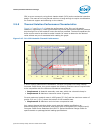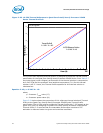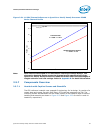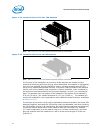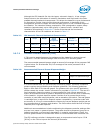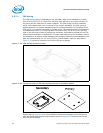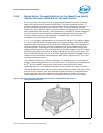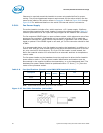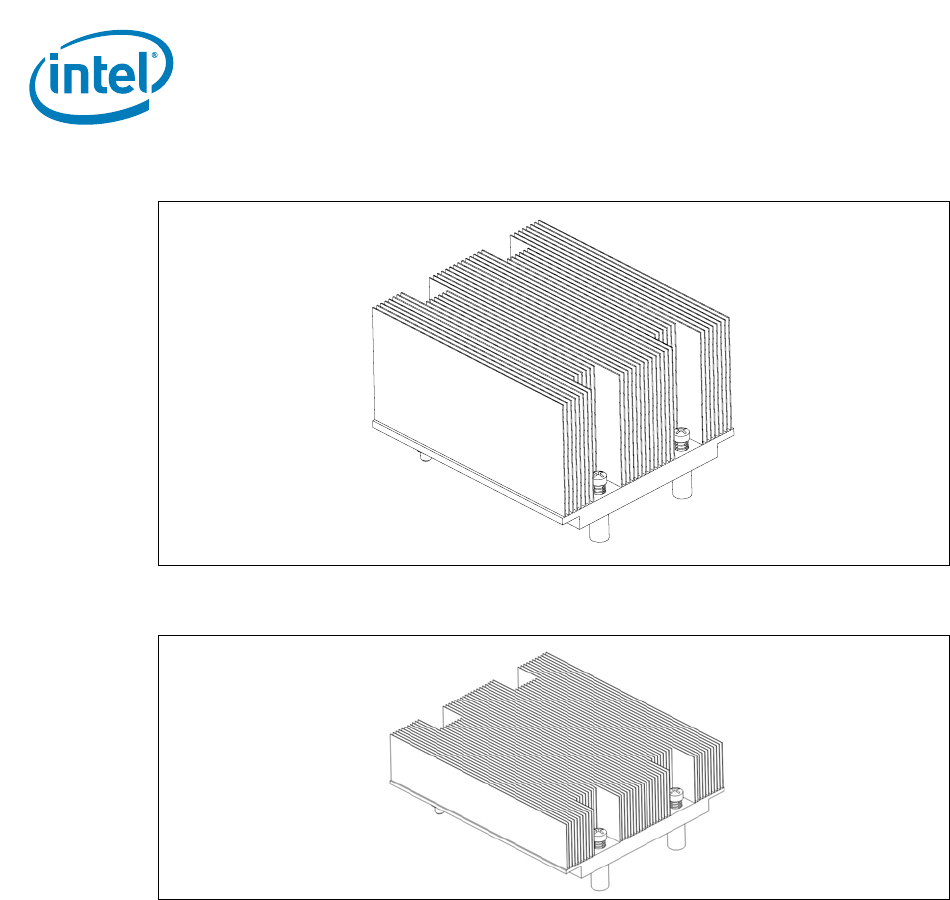
Thermal/Mechanical Reference Design
46 Quad-Core Intel® Xeon® Processor 5400 Series TMDG
Note: Refer to Appendix B for more detailed mechanical drawings of the heatsink.
.
Note: Refer to Appendix B for more detailed mechanical drawings of the heatsink.
The function of the standoffs is to provide a bridge between the chassis and the
heatsink for attaching and load carrying. When assembled, the heatsink is rigid against
the top of the standoff, and the standoff is rigid to a chassis standoff with the CEK
spring firmly sandwiched between the two. In dynamic loading situations the standoff
carries much of the heatsink load, especially in lateral conditions, when compared to
the amount of load transmitted to the processor package. As such, it is comprised of
steel. The distance from the bottom of the heatsink to the bottom of the standoff is
8.79 mm [0.346 in.] for a board thickness of 1.57 mm [0.062 in]. The standoff will
need to be modified for use in applications with a different board thickness, as defined
in Section 2.5.4.2.
The function of the screw is to provide a rigid attach method to sandwich the entire CEK
assembly together, activating the CEK spring under the baseboard, and thus providing
the TIM preload. A screw is an inexpensive, low profile solution that does not negatively
impact the thermal performance of the heatsink due to air blockage. Any fastener
(i.e. head configuration) can be used as long as it is of steel construction; the head
does not interfere with the heatsink fins, and is of the correct length of 20.64 mm
[0.8125 in.].
Figure 2-22. Isometric View of the 2U+ CEK Heatsink
Figure 2-23. Isometric View of the 1U CEK Heatsink




